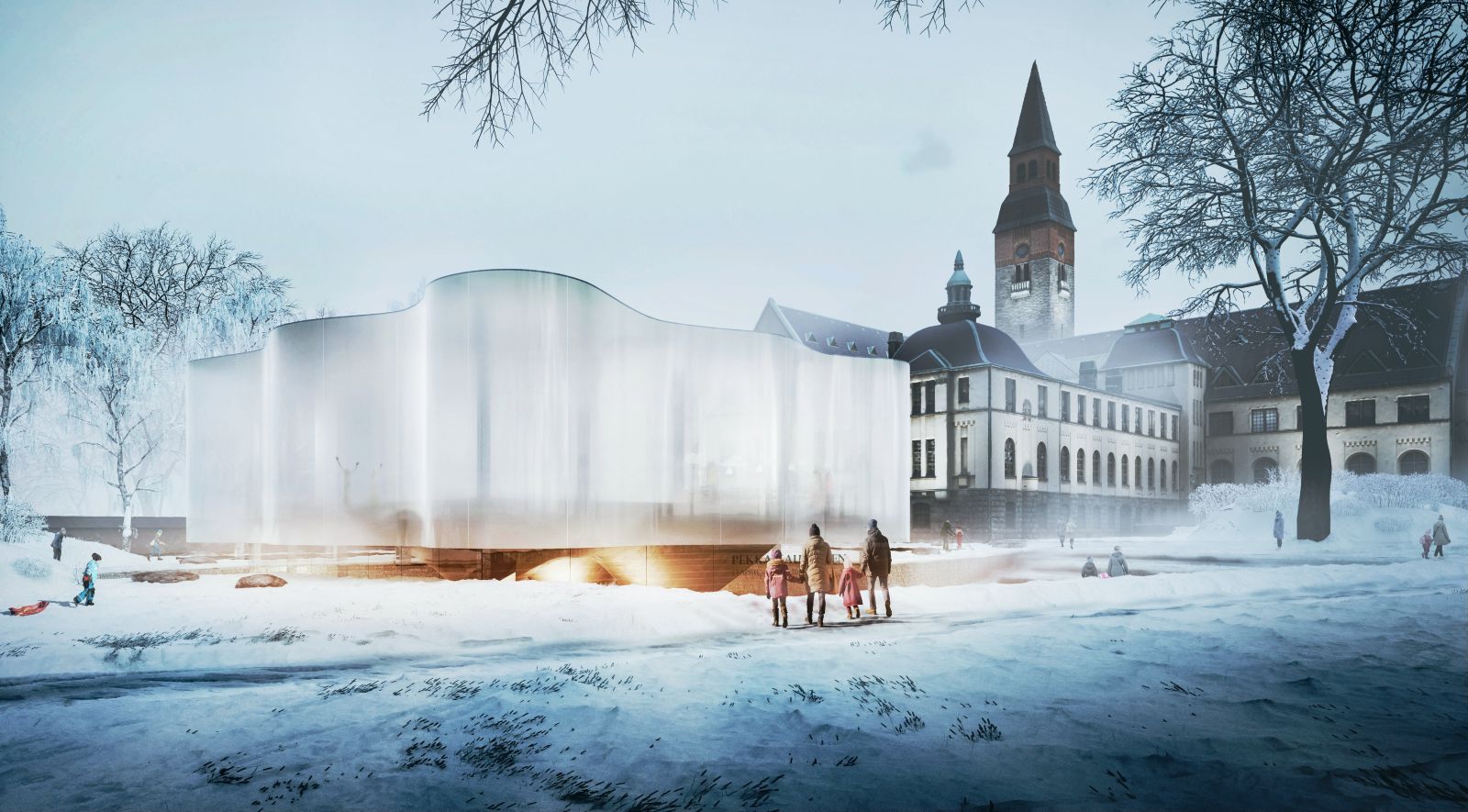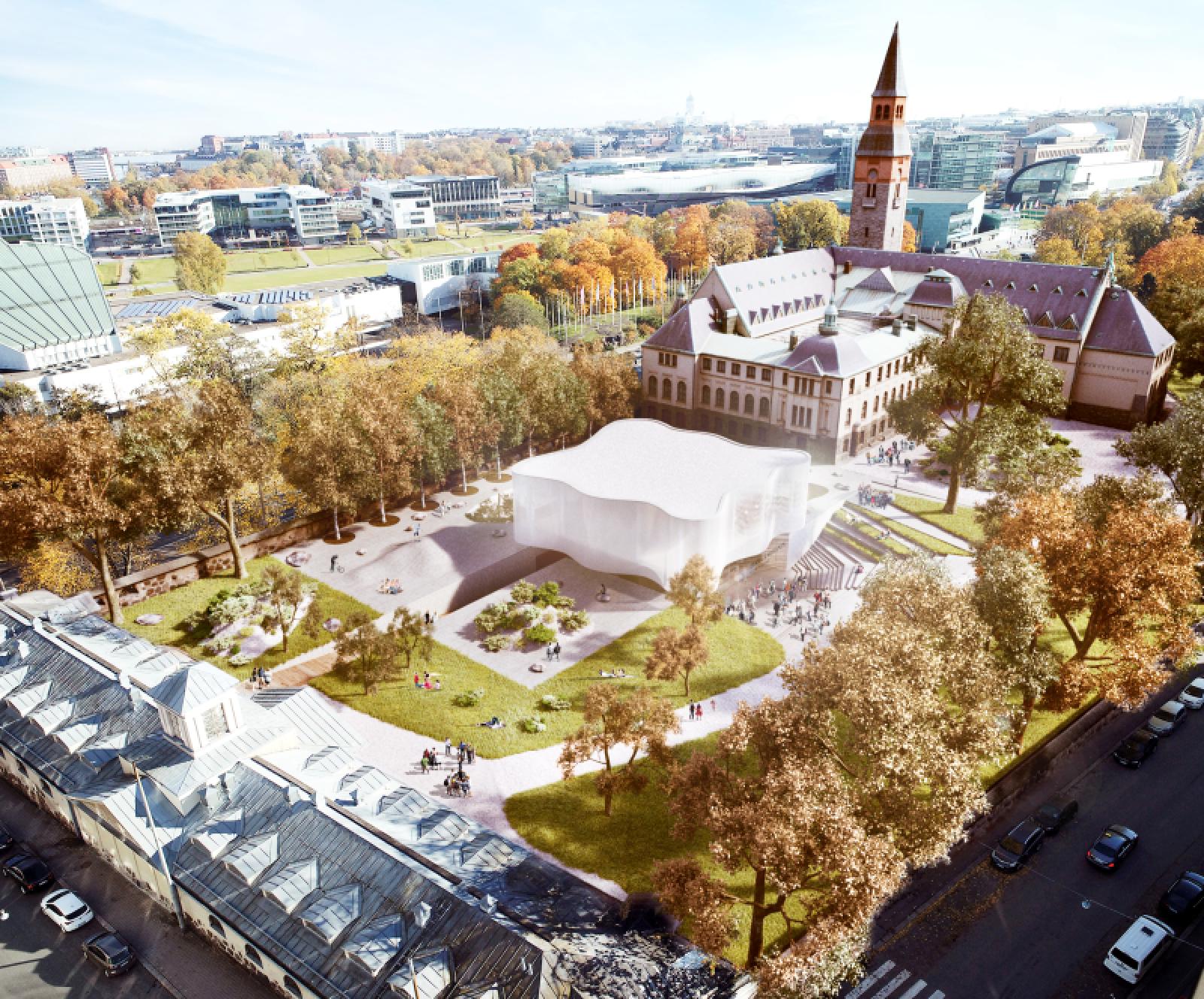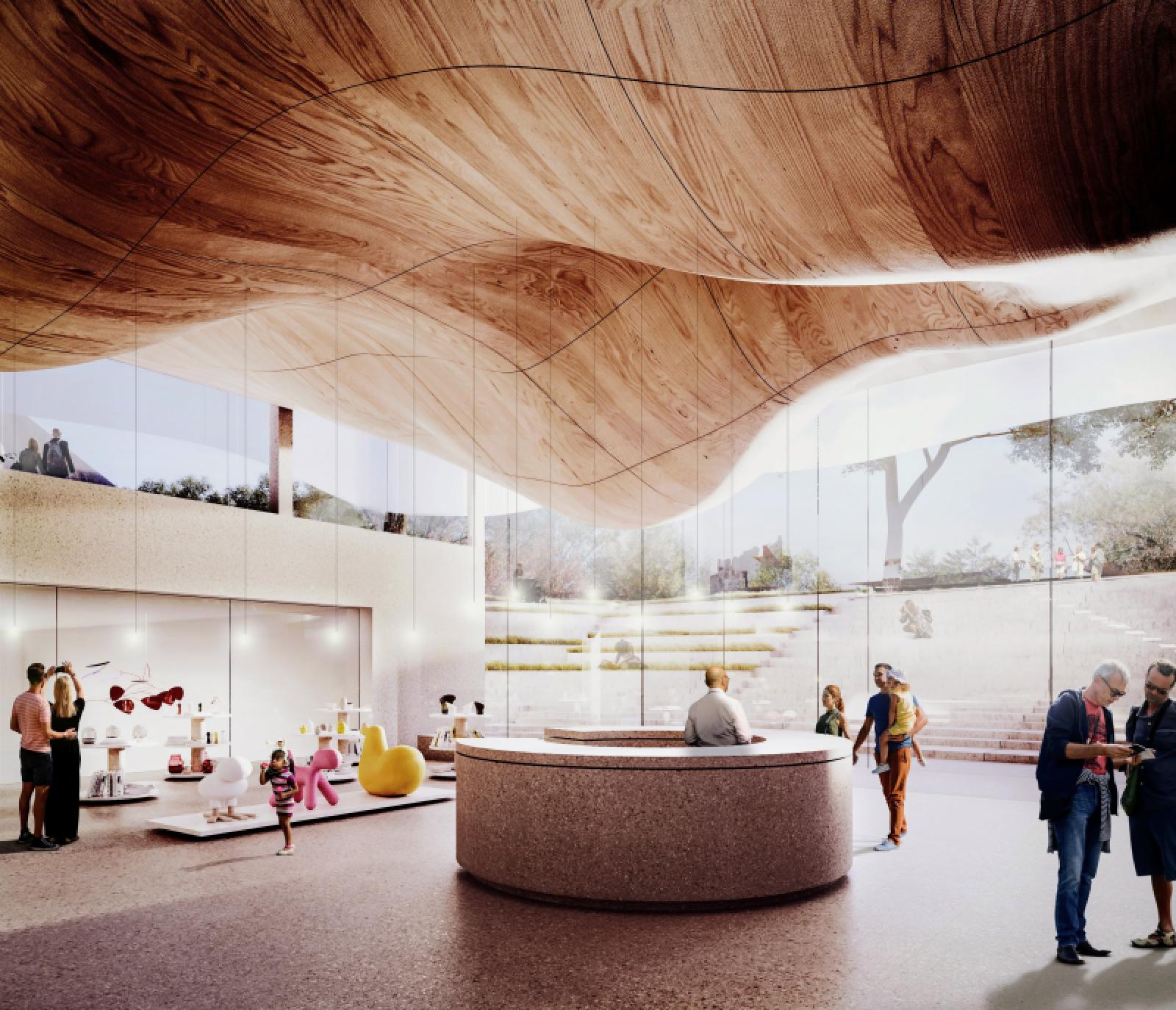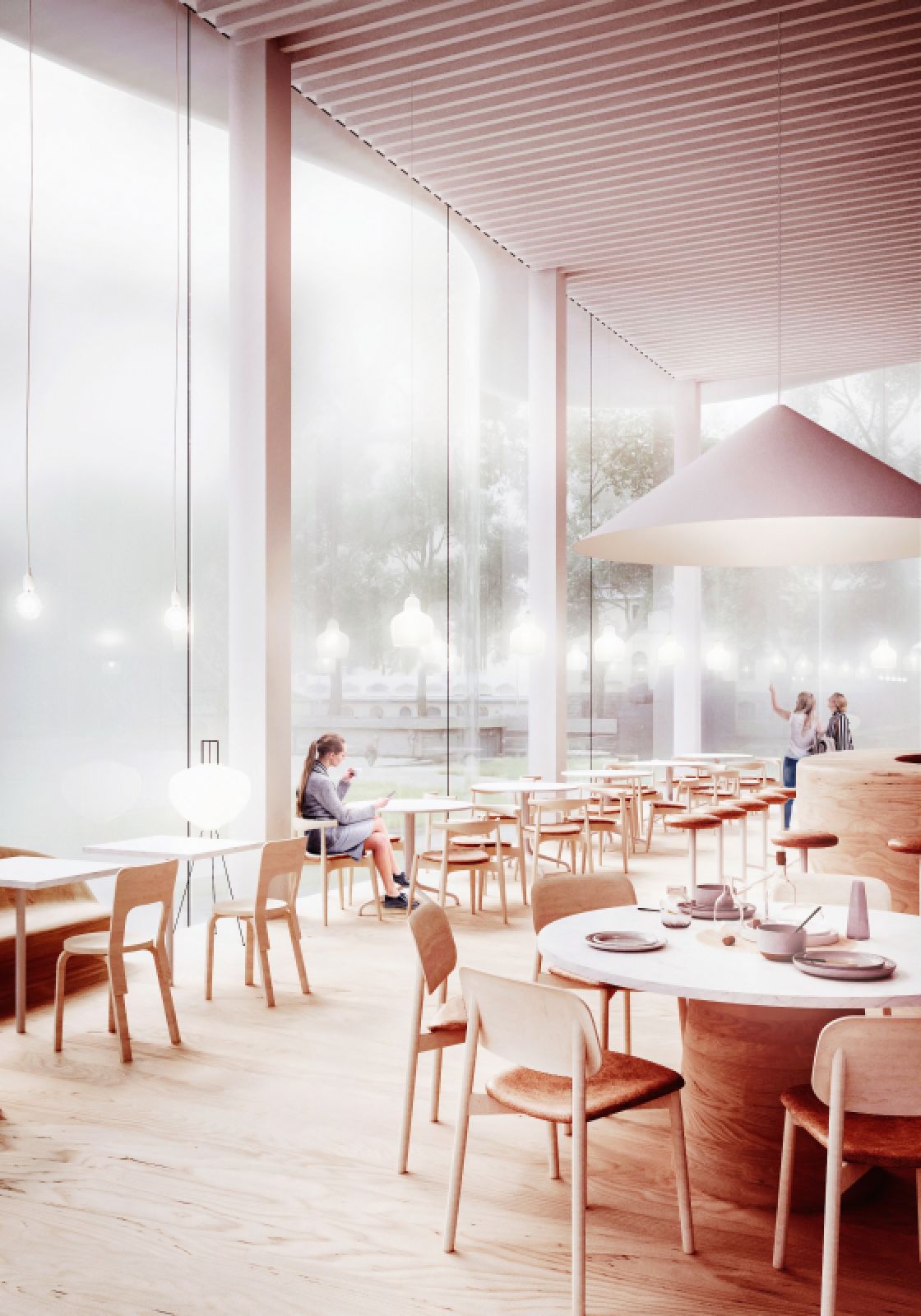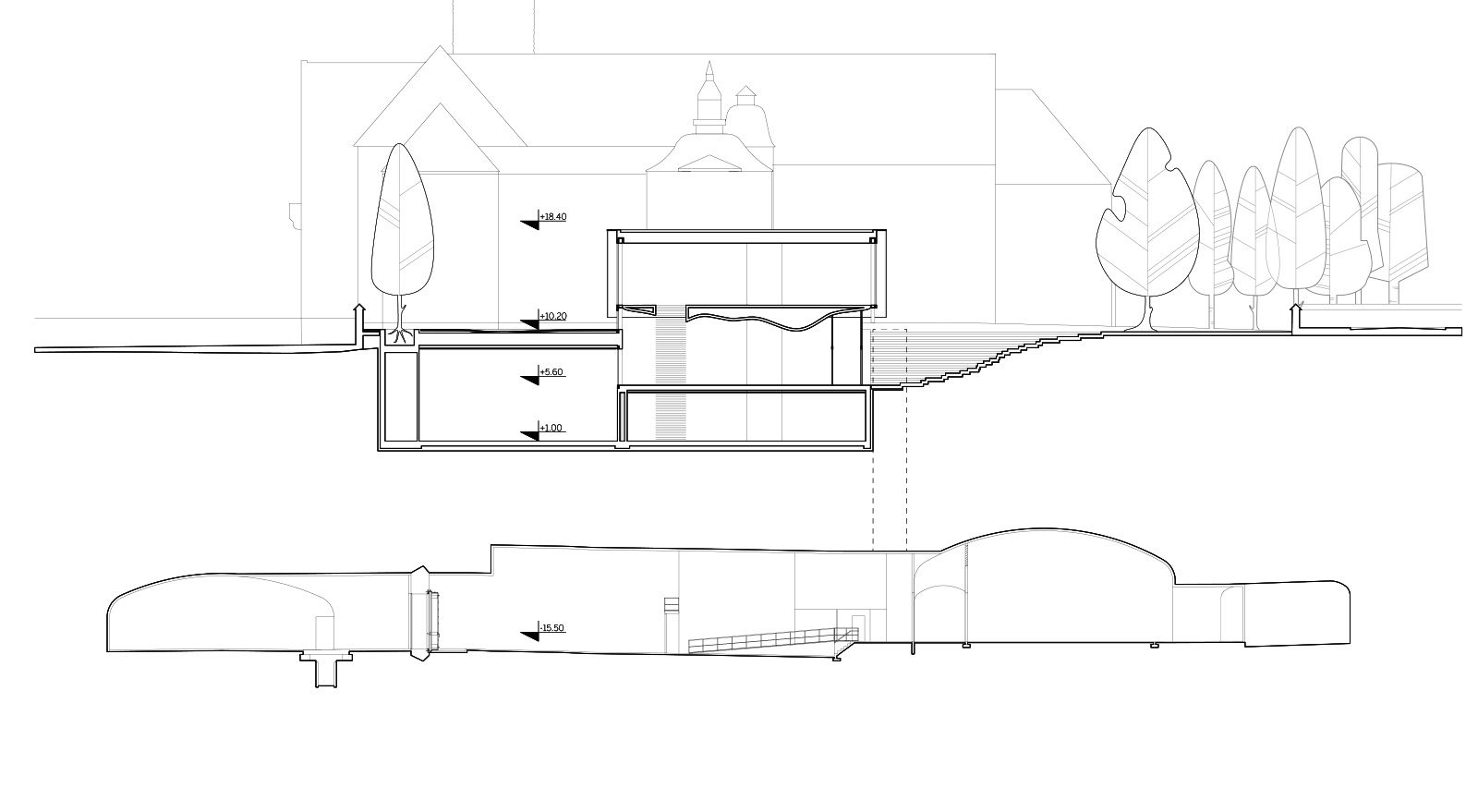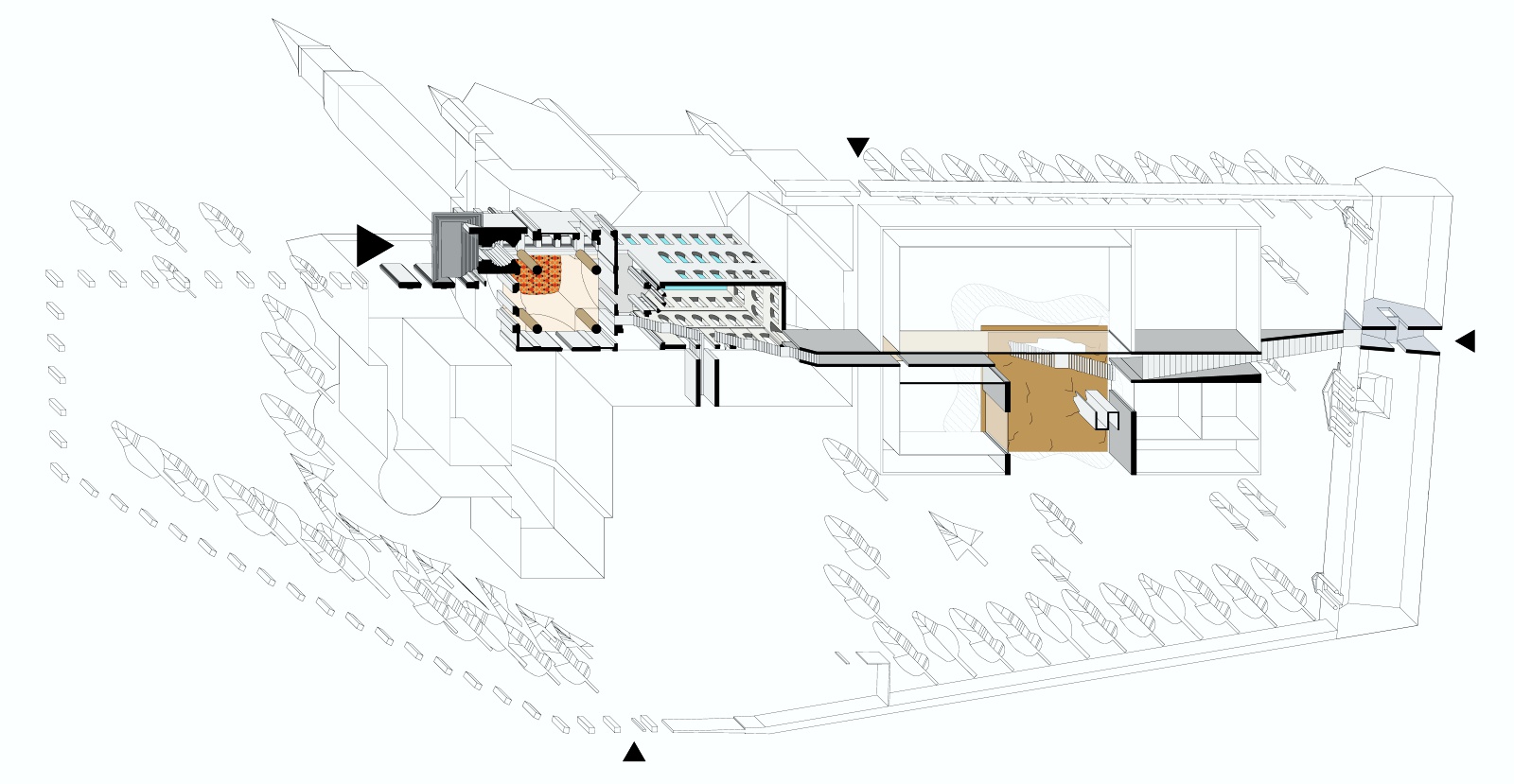Suppa is a proposal for the New National museum of Finland international competition designed by hey5, a young multicultural architecture office. Suppa is a typical Finnish landform, a hollow created when buried blocks of glacier melt out. The ambition of the proposal is to create a flexible organizational system and a bold object representing « The New National ». A simple, holistic arrangement which connects old and new, allowing the institution to function as a unified whole.
The proposed Annex facilitates the hosting of extensive and demanding international exhibitions at the National Museum. The idea of functionally connected (underground) but visually disconnected (above ground) is fostered. Placing the majority of functions underground allows to maintain as much as possible the existing park while achieving the strongest connection to the current museum with minimal interference to the existing architectural structure.
Although separated physically, a strong dialogue is created between old and new with the addition becoming very much a part of the museum’s urban ensemble. The National Romantic architecture of the existing museum could be seen as a counter response to industrialization and machine production. It is a celebration of craft and romantic tradition. Suppa is to be a functional and architectural reinterpretation of the concept of ‘national’, embodying the spirit of Finland pursuing the notion of « an object in the landscape ».
Finnish values regarding nature and the landscape are central to the new volume and its relationship to the park. The addition is imagined as a three-dimensional piece of furniture creating simultaneously both a ceiling and a floor. Its curved underside defines the spatial arrangement of the entrance lobby while its top surface creates a landscape within the restaurant. The translucent facade gives the volume an ephemeral cloud like appearance.
By breaking the ground and elevating the excavated mass as a suspended volume, a sunken chamber below the raised volume is created. By doing this the project is divided in sections over four levels. Uppermost is the raised volume which becomes the image of the project and houses the restaurant. This is the « object in the landscape ». Simultaneously a landmark, a lantern, a cloud and a piece of furniture. The next level below is that of the park.
By the manipulation of the ground a physical connection is created to the sunken lobby via a generous sloped approach to the annex entrance from the park and the entrance along Töölönkatu. This provides an area for outdoor public recreation and performances. By burying the majority of the program, the park is maintained as a public amenity. On the first sunken level is the entrance lobby, café and shop. At this level it is connected underneath the north wing of the existing.
The central thought is to create a generous entrance hall with a formed timber roof connected physically and conceptually to the main entrance hall. The connection is along a central axis running through the park from the existing museum, through the annex to the museum buildings along Cygnaeuksenkatu. This axis ties the whole museum together functionally and creates the spine of the project.
By glazing the court, a new interior room adjacent to the existing grand entrance hall is created. The lowest level is where the new exhibition spaces are located. Generous light enters through the crack in the section on the level above which also allows views into the exhibition spaces. A flexible arrangement of exhibition spaces can be easily connected or separated to allow for multiple exhibition arrangements. Source by hey5.

